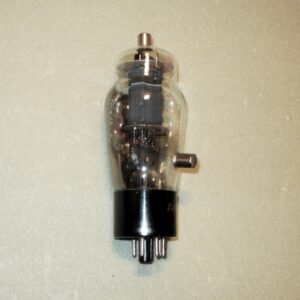triode.
| Parameter | Meaning |
|---|---|
| Incandescent voltage, V | 6,3 |
| Incandescent current, A | 1 |
| The voltage at the anode is nominal, V | 250 |
| Nominal anode current, mA | 60 |
| The voltage at the anode is maximum, V | 325 |
| Maximum anode current, mA | 90 |
| Steepness of the characteristic, mA/V | 5,2 |
| Internal resistance, Ohms | 800 |
| Gain factor | 4,5 |
6X4S is an electronic lamp manufactured in the USSR — a powerful triode, with a direct—filament cathode and an octal base. The lamp is designed to enhance low-frequency power in sound reproducing devices and low-frequency signal generators. It is a Soviet copy of the 6B4G lamp manufactured in the USA.
An interesting design feature of the lamp is the presence in one cylinder of two triodes, the anodes and grids of which are connected in parallel, and the direct—filament cathodes are connected in series. Some radio amateurs believe that this circumstance is undesirable for lamps used in single-stroke amplifiers.
In the USSR, almost no sound amplification equipment based on this lamp was mass-produced, except for Leningrad T-3 televisions, produced in a small batch in the early 50s. The Leningrad radio receiver was developed under the 6X4S lamp in the 60s, but it did not go into series. The lamp was used in the first releases of the G3-2 low-frequency signal generator (later it was replaced by the 6P3C lamp in triode switching).











